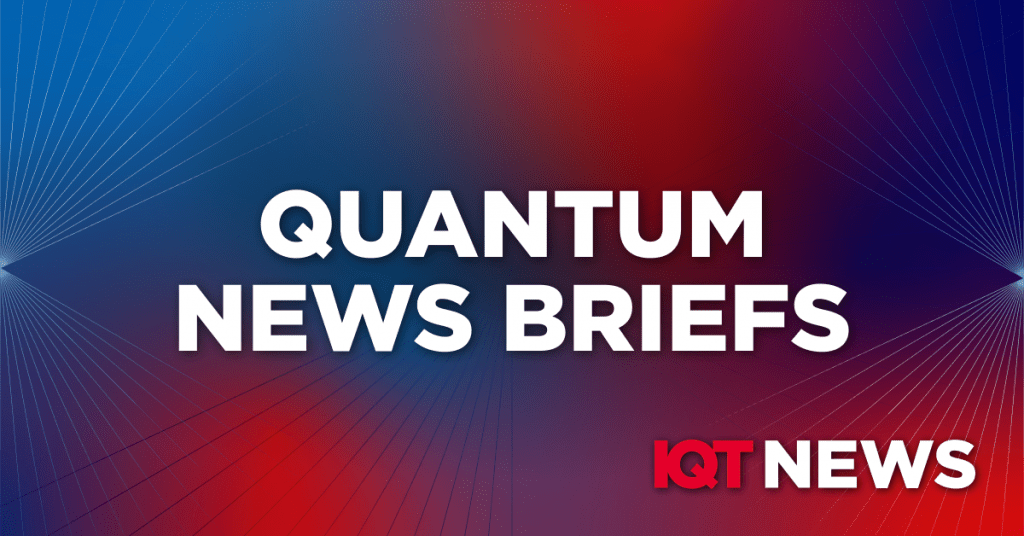In Other News: Microsoft Blog reports “Microsoft & Quantinuum create 12 logical qubits and demonstrate a hybrid, end-to-end chemistry simulation”
Krysta Svore, Technical Fellow, Advanced Quantum Development, Quantum at Microsoft authored the September 10 Microsoft Azure blog September 10. Quantum News Briefs summarizes below.
Microsoft and Quantinuum applied Azure Quantum’s qubit-virtualization system to Quantinuum’s H2 trapped-ion quantum computer to create 12 highly reliable
To demonstrate the emerging usefulness of quantum computing in chemistry applications, an end-to-end hybrid workflow was used to solve a real problem in chemistry, bringing together computation across cloud HPC, reliable quantum computing, and AI. In the quantum computation, two logical qubits—created with Microsoft’s qubit-virtualization system and Quantinuum’s H1 machine—were used to prepare the ground state of the active space of an important catalytic intermediate and then measured. The measurement outputs were then integrated with AI to estimate the ground state energy of the active space.
This is the first time that HPC, AI, and quantum-computing hardware have been applied in concert to solve a scientific problem.
This demonstration provides evidence of the emerging usefulness of quantum-classical hybrid computing in chemistry, and it offers an example of how HPC, AI, and logical qubits can be used collectively to solve scientific problems.
EPB Quantum NetworkSM powered by Qubitekk hosts Oak Ridge National Laboratory’s first run on a commercial quantum network
For the first time, Oak Ridge National Laboratory (ORNL) will run equipment developed at its research facilities on a commercially available quantum network at EPB Quantum NetworkSM powered by Qubitekk as per September 11 news release. Starting this month, ORNL is testing its Automatic Polarization Compensation (APC), a key technology needed to convey quantum data across a network while maintaining all its complexities and probabilities. The University of Tennessee at Chattanooga (UTC), the first American university to host a permanent connection to a commercially available quantum network, is also participating in the effort to validate the technology’s commercial viability.
APCs are a critical component in developing the ability to transmit information over real-world quantum networks consistently. They help mitigate data interference caused by common factors that impact the fiber optic cables that can serve as the “highway” for data maintained in a quantum state, like wind, a range of outdoor temperatures, and other environmental disruptions. ORNL’s APC uses a new multi-axis control mechanism to measure and compensate for polarization changes on quantum fiber networks. The ultra-sensitive detection achieves fast and complete control of light polarization with low noise to ensure continuous operation without downtime.
The APC was developed by Dr. Joseph Chapman, a research scientist in the quantum communications and networking groups at ORNL.
Aliro Expands Relationship with US Air Force for Quantum Networking
Aliro will provide Aliro Simulator, a versatile, modular quantum network simulator equipped to model an entanglement-based network. AFRL will evaluate Aliro’s unified intuitive software application capabilities in a test environment of AFRL quantum networks. This deal comes three years after Aliro announced that it had received contracts from the U.S. Air Force to research quantum network technologies.
Aliro, is providing AFRL with the Aliro Simulator to construct and simulate various hardware devices and quantum network infrastructure at scale, with resolution all the way down to low-level physical phenomena. The agreement includes technical and use-case support services, such as building new models and developing additional features in the simulator to ensure best simulation results, as well as a feedback loop between simulated experiments and empirical data from physical experiments
IonQ and the University of Maryland sign $9M partnership to drive quantum innovation
UMD’s investment in quantum spans over 35 years and has produced a world leading concentration of quantum expertise – including Nobel Laureate Dr. William Phillips. The University’s 10 quantum-focused centers have over 200 researchers who have produced 200+ publications annually, and graduated 100+ quantum-focused physics PhDs in the last decade.
As a result of UMD’s investments, QLab has become a quantum innovation hub, driving economic development in the state, while attracting top talent to the region. With substantial allocations to the open science community for high-impact scientific research projects, IonQ and UMD strive to foster connections with universities in Maryland and provide access to researchers globally.
